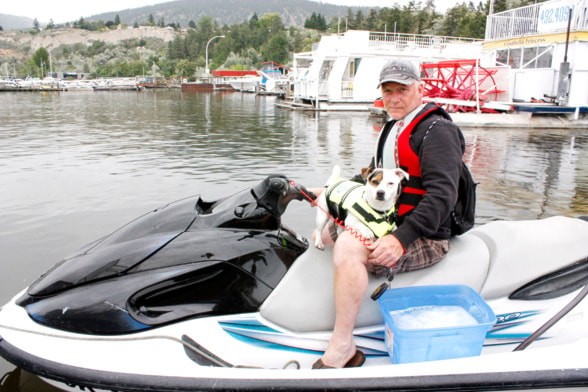The South Okanagan is being invaded. Silently, stealthily, the invaders aim to damage our infrastructure, our economy and even our well-being.
The only problem? The invaders are near-invisible. And people are unknowingly helping them achieve their goals. But fear not; much like the Avengers, a local initiative is working to keep us all safe.
June 11 to 17 marks the inaugural Invasive Species Week, a provincewide effort to enlighten the good citizens of B.C. to the chaos that constantly conspires against us.
Invasive species is the term used to describe any species that aren’t naturally present in an area, and if introduced into the area, can have serious impacts in the area.
The local organization promoting the Invasive Species Week is the South Okanagan-Similkameen Invasive Plant Society. Lisa Scott, local biologist and the society’s co-ordinator, said the purpose of the event is to educate people on how they can help slow, or even stop the invasion.
“It’s really making people aware of the issue and making people realize that everybody is part of the problem, but everybody can be part of the solution as well,” said Scott. “Invasive species can affect us all, and I think that’s a big message we need to get out there.”
Two of the invading species, the zebra and quagga mussels, have been slowly trekking their way across the continent, lake by lake, and if nothing is done could soon be found in the area’s lakes, with dire consequences, said Scott.
These consequences? The complete eradication of an already endangered mussel in the Okanagan, the clogging of water intake pipes and the constant attaching to everything, from pipes to boat propellers. But that’s not the worst of it.
“The other big thing is known as biofouling. Their excrement... The bottom line is they could affect our drinking water, in a nutshell,” said Scott.
These mussels are just an example of the species that can be brought into the area and wreak havoc with the fragile ecosystem. Oftentimes, Scott said, the species are introduced through people not thinking about the consequences of their actions.
For example, she said the Eurasian milfoil, which has been leaving a legacy of terror (or at least inconvenience) in the region for decades, was introduced to the area by someone simply dumping an old aquarium, complete with a decorative Eurasian milfoil, into the lake.
To combat this constant threat of aquatic invasion, Scott has simple advice for boaters, who are most likely to be unknowing carriers for these species — clean, drain and dry boats before going to a different lake.
“So today we’re in Osoyoos Lake, and tomorrow we’re gonna be in Okanagan Lake,” she explains. “We clean, drain and dry before we go in there, so that we’re preventing the spread of an aquatic invasive from one lake to the next.”
On Friday between 1 and 5 p.m., there will be an information station set up at the Skaha Lake boat launch where Scott and her team will be giving information to boaters on how they can help stem the invasion. They will also be set up on Saturday’s farmers’ market.
For more information, visit www.sosips.ca.
